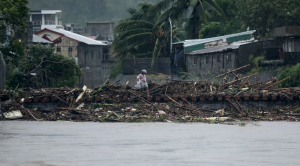The storm made landfall at Dinalungan in Aurora province late Sunday and battered communities with violent winds, torrential rain and storm surges before moving into the South China Sea on Monday morning.
Landfall and immediate impacts
Fung-wong struck the eastern seaboard with destructive gusts and heavy seas, toppling trees and power poles and ripping roofing in coastal towns. Parts of Isabela, including Santiago and Cauayan, reported damaged homes and blocked roads. Provincial officials said multiple upland and coastal communities were cut off by landslides and debris, complicating early rescue runs and damage assessments.
Ongoing risks and forecast track
The state weather service warned of continuing heavy rain, severe winds and coastal swells across a wide swathe of Luzon even as the typhoon tracked over the South China Sea. Forecasters expect a recurvature towards the northeast, placing southern and eastern Taiwan under potential threat later this week. River flooding, storm surge and rain-induced landslides remain key concerns until bands fully clear.
Exam Oriented Facts
- Landfall: Dinalungan, Aurora, on Sunday night (local time).
- Evacuations: Over one million residents moved to safety.
- Context: 21st storm to hit the Philippines this year; followed Typhoon Kalmaegi’s deadly impact last week.
Response and recovery priorities
Local governments launched clearing and search operations at first light, focusing on isolated towns where roads are impassable. Priorities include power restoration, reopening primary routes, and relief delivery to coastal barangays hit by surge. National agencies urged residents to heed advisories on secondary landfalls of rainbands, with schools and offices in several provinces keeping closures until hazards subside.









